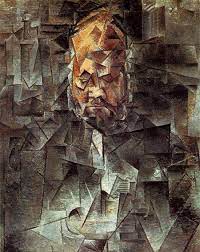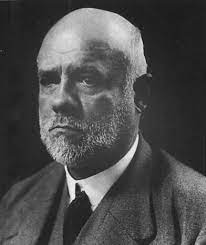by Dwight Furrow

Many works of art seem to be about something. Even if they don’t convey a clear message, they nevertheless invite thought about a subject matter and thus can be said to represent an object, process, or state-of-affairs. Does this language of representation help clarify the sense in which some wines can be considered works of art? In what sense does a wine represent something?
The obvious candidate for the subject matter of a wine is its terroir—the soil, climate, weather, and other geographical and geological features of the place in which the grapes are grown. Wine presents a subject matter—the nature of its terroir—and invites us to explore it via the flavors, aromas, and textures of the wine, just as a painting presents a subject matter and invites us to explore it via line, shape, and color. Thus, wine has the “aboutness” relationship that is generally regarded as a necessary condition for representation.
But how does wine present a subject matter? What is the nature of this “aboutness” relationship?
There is a straightforward way in which some paintings present a subject matter. A painting presents a subject matter because it looks like the object depicted. We learn via the painting what the subject looks like. This is the resemblance theory of representation that was taken for granted throughout much of art history. There are many problems with resemblance theories. As Nelson Goodman argued, anything resembles anything else in some respect. Resemblance is too loose a relation unless we can say more about what kind or degree of resemblance counts as a genuine depiction.

Furthermore, paintings often don’t bear much resemblance to the objects they depict. One can discern the likeness of Ambroise Vollard in the Picasso’s portrait of him, although the dissimilarities are more striking. Nevertheless, it’s clear that some paintings do resemble their subject matter even if it’s hard to generalize about how they do so.
However, the notion of resemblance won’t help with regard to wine as a representation of terroir. Wines don’t resemble soil or weather. There is a long history of people talking as if they could taste certain minerals in a wine, which they assumed were transferred from the soil of the vineyard, but this idea has been debunked by science—most minerals don’t have a flavor and even if they did there is no mechanism for transferring that flavor to the vine and then to the grapes. Thus, a wine does not resemble the terroir in which it was grown, if by “resemble” we mean “taste like.”
Resemblance, however, is not the only relationship that constitutes representation.
The most prominent alternatives to resemblance theories are those that understand a representation to be a kind of interpretation via conventions. There are many versions of this theory, but Nelson Goodman’s is perhaps the most sophisticated. Goodman argues that artists interpret or construe their subject matter. However, he writes, ‘‘in representing an object we do not copy such a construal or interpretation — we achieve it.” The choice of materials, instruments, and techniques are part of the interpretation of the subject matter, which is a matter of employing certain conventions to denote an object. Paintings denote, point to, a subject matter via certain conventions such as the use of perspective or through abstraction and then flattening of a two-dimensional surface. The latter is what Picasso was doing with his Portrait of Vollard using the conventions of cubism. The same can be said of music. Composers of ambient music have long used synthesizers to render the sound of space, although there is no reason to think the sound of space resembles a harmonically modulated sine wave. It has simply become a convention to represent space via those sounds.
Does this help us understand how wine can represent terroir? Well, I think it helps but doesn’t get us all the way there.
Contrary to some of the discourse around natural wines, wine does not make itself. All wines are the result of numerous decisions made in the vineyard and winery that influence the final product. This is true of artisanal wines as well as industrial wines, although the nature of the decisions are respectively different. When a wine carries the flavor/texture signature of a vineyard or region, it does so because the winemaker has been careful to preserve it in the finished product. In each wine region, and often for particular producers, there are conventions repeated in each vintage about how to grow and trellis the grapes for optimal sun exposure, when grapes should be harvested, and how the grapes should be vinified and the wine aged, etc.
The distinctive flavor/texture signature of the vineyard or region would not be replicable without those conventions. But it can’t be only conventions at work. The whole point of the wine world’s fascination with terroir is the clear evidence that regional differences and specific vineyard site play a substantial role in the character of a wine. Because there is a good deal of overlap in the conventions employed in various regions or by various producers, they can’t fully account for the differences in their finished product. Terroir matters.
I think the best way to explain the representational function of wine is to point out that we misspeak when we say that a wine represents terroir. What the wine represents is the impact of terroir on the grapes from which the wine is made. The wine in your glass in some sense resembles and thus represents the grapes from which it is made, which gain their character from the features of soil, climate, and weather characteristic of a particular vineyard. The methods used by the winemaker are construing the grapes in a way that preserves that impact on the final product.
We might say something similar about some representational paintings. Picasso’s rendering of Vollard could be a work of pure imagination having nothing to do with the actual appearance of Vollard. But, on the other hand, the physical appearance of Vollard probably generated the idea of Vollard, which Picasso then rendered in the painting. What Picasso did was preserve that impact in his representation using the conventions of cubism in just the way a winemaker preserves her idea of the impact of terroir on her grapes in the finished wine using various conventions of winemaking.
I have argued elsewhere that the language of expression is better suited to the aesthetics of wine than the language of representation. Nevertheless, we can think of wine as a form of representation when the “aboutness” relation is properly construed.
For more on the philosophy of wine, visit Edible Arts or consult Beauty and the Yeast: A Philosophy of Wine, Life, and Love.
